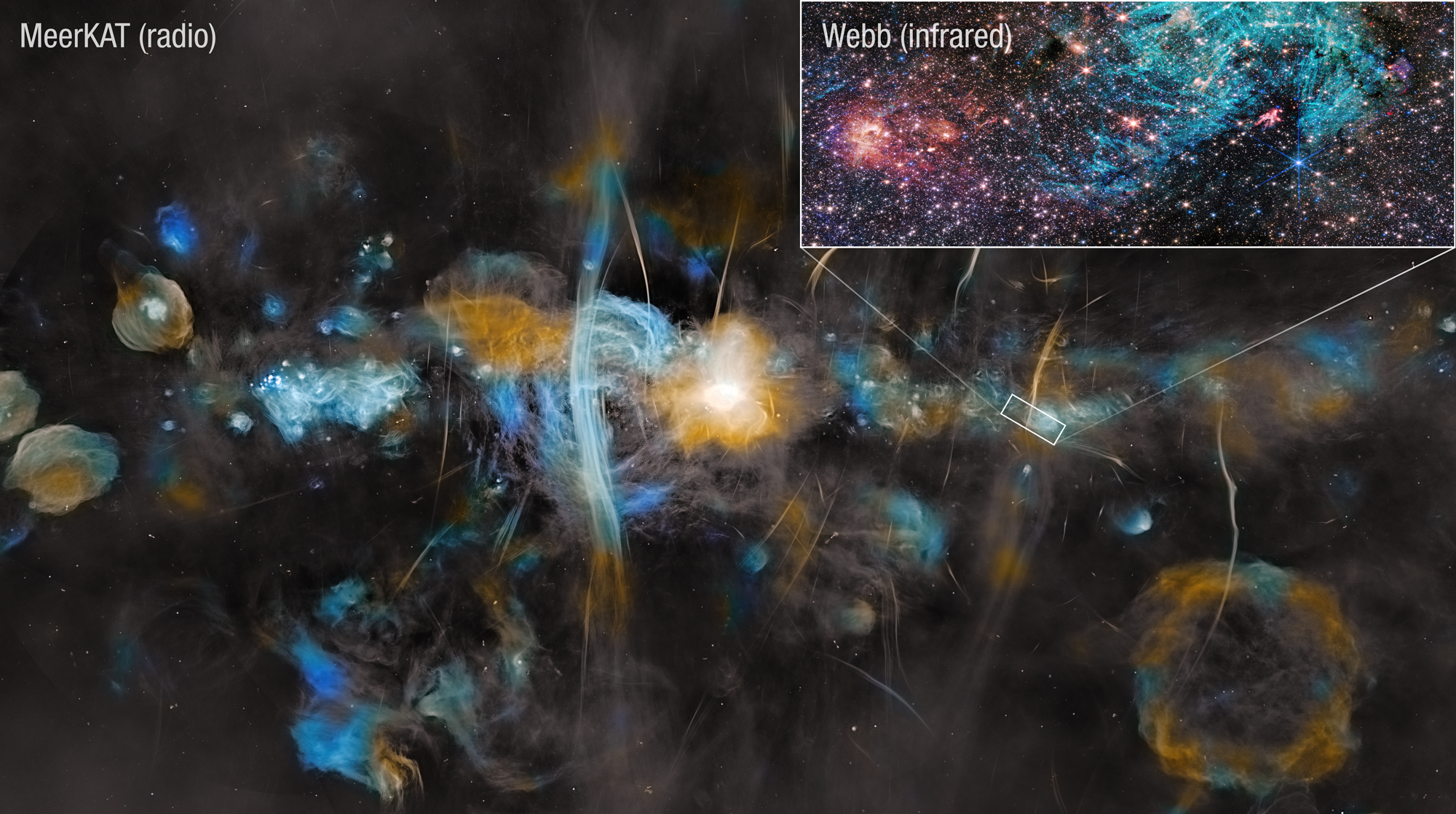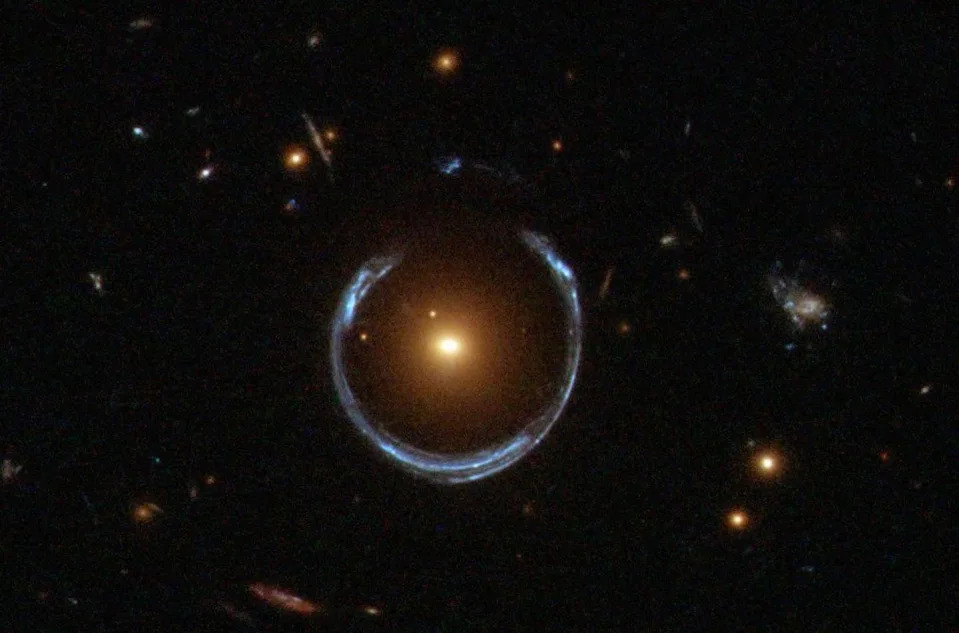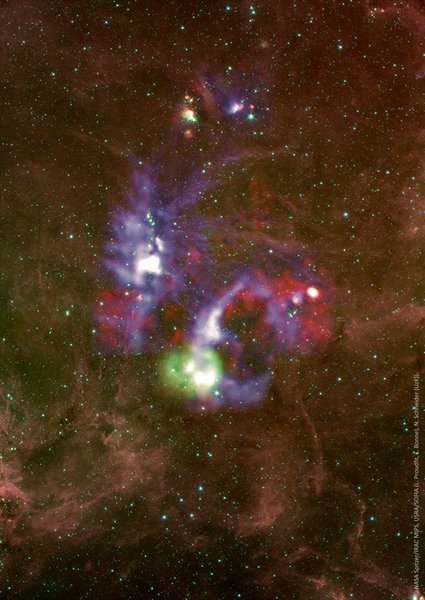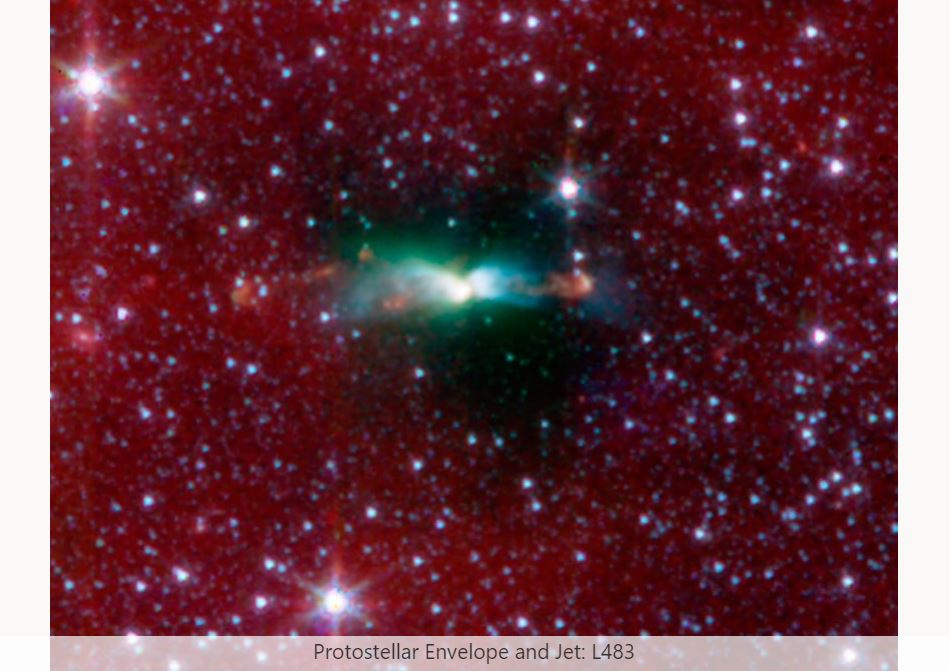
NASA, ESA, CSA, STScI, SARAO, Samuel Crowe (UVA), John Bally (CU), Ruben Fedriani (IAA-CSIC), Ian Heywood (Oxford)
Follow-up research on a 2023 image of the Sagittarius ...
Read More

Follow-up research on a 2023 image of the Sagittarius ...
Read More
A study using data from telescopes on Earth and in the sky resolves a problem plaguing astronomers working in the infrared and could help make better observations of the composition of the universe with the James Webb Space Telescope and other instruments. The work is published April 20 in Nature Astronomy.
“We’re trying to measure the composition of gases inside galaxies,” said Yuguang Chen, a postdoctoral researcher working with Professor Tucker Jones in the Department of Physics and Astronomy at the University of California, Davis.
Most elements other than hydrogen, helium and lithium are produced inside stars, so the composition and distribution of heavier elements — especially the ratio of oxygen to hydrogen — can help astronomers understand how many and ...
Read More
New observations have brought to light that stars can form through the dynamic interaction of gas within interstellar gas clouds. This process unfolds faster than previously assumed, research within the FEEDBACK programme on board the flying observatory SOFIA revealed.
Even though SOFIA is no longer in operation, the data collected so far are essential for basic astronomical research because there is no longer an instrument that extensively maps the sky in this wavelength range (typically 60 to 200 micrometres). The now active James Webb Space Telescope observes in the infrared at shorter wavelengths and focuses on spatially small areas...
Read More
Event provides new evidence that traveling stars can form binary systems. From a zoomed out, distant view, star-forming cloud L483 appears normal. But when a Northwestern University-led team of astrophysicists zoomed in closer and closer, things became weirder and weirder.
As the researchers peered closer into the cloud, they noticed that its magnetic field was curiously twisted. And then — as they examined a newborn star within the cloud — they spotted a hidden star, tucked behind it.
“It’s the star’s sibling, basically,” said Northwestern’s Erin Cox, who led the new study. “We think these stars formed far apart, and one moved closer to the other to form a binary. When the star traveled closer to its sibling, it shifted the dynamics of the cloud to twist its magnetic field.”
...Read More
Recent Comments